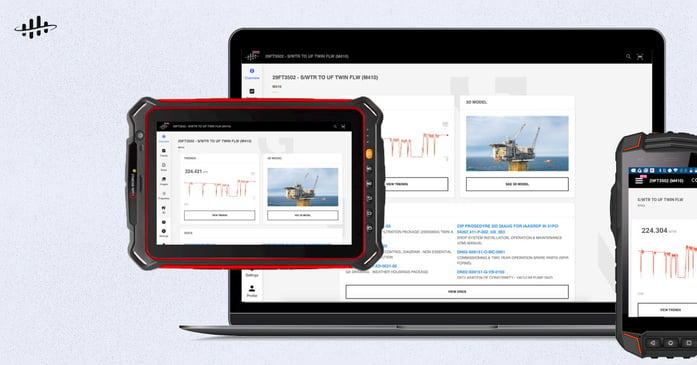
Today offshore field workers rely on a number of different software applications in their day-to-day work. Many of those applications aren’t available on mobile devices, however, so the workers spend a lot of time moving between the field and their offices in order to make sense of how data from the different systems relate.
Cognite last year started developing an application to fix that problem. Called Operation Support, the application helps field workers plan their work, locate equipment, pull up information when they need it, and share what they’re seeing in the field.
In keeping with Cognite’s belief in the power of interdisciplinary collaboration, the team behind Operation Support consists of designers, developers, and customer success representatives whose educational backgrounds span from software engineering and product design to ballet and political science.
We sat down with the team to discuss their work and its impact:
What does your team do?
Kristoffer Husøy, director of design: "We develop an application called Operation Support, which allows offshore workers to access live data from any system on any device, enabling them to increase efficiency, save time, and make data-driven decisions. In short, we try to improve their everyday work experience with a better digital tool.
We also help clients set up and roll out smartphones and then follow the rollout closely, training field technicians in using the device and our application in order to standardize the rollout process so it can scale easily and seamlessly."
How does your team work?
Christoffer Lange, senior designer: "First of all, we work in a human-centric fashion. That means we are always talking to the people using our product. Since our users are offshore, we spend a lot of time shadowing them, observing how they work, interviewing them, and living alongside them to learn what their needs are. We not only ask “What do you need?” but spend time analyzing and understanding the underlying problems that we should solve.
Secondly, our team of developers, designers, product managers, and customer success representatives sit co-located so that we can make decisions quickly together. Design and development go hand in hand, so the process is very much collaborative. We follow two-week sprints -- every two weeks, we demo what we have made."
What is your team focusing on right now?
Valerii Gusev, senior developer: "We are working hard on continuously improving Operation Support to become the go-to tool for field technicians in asset-heavy industries. We are right now working to make time series trending easier to use, enhancing the checklist functionality, and improving the interaction between the 3D model and other data sources in order to create a seamless and intuitive journey through information. After that we will be investigating how we can make the application useful for installations that have not yet rolled out wi-fi coverage.
In parallel, we are working with our partners to get more apps running on phones. We don’t believe in a “one app to rule them all” approach, so we work with partners such as AVEVA, Siemens, SAP, TESS, and others to get an ecosystem of great, useful apps that work well together."
What impact has Operation Support had so far?
Cathrine Stenstadvold, director of product management: "Operation Support is changing how technicians perform inspection work. Safety-critical equipment needs to be inspected regularly to ensure it doesn’t fail at the wrong time. There are thousands of pieces of equipment that need to be tested every year, and for each batch the user must assemble a list of equipment (e.g. all valves of type X in area Y), print the relevant documents, locate all of the equipment in the field, and write down information manually. It takes a lot of time, and it’s easy to make a mistake.
With Operation Support, field workers can dramatically reduce the time they spend collecting documentation and information, and go directly out into the field to get their job done. Using the 3D model on the phone, locating equipment on an installation has become so easy that even a visitor from our team can find their way around."
At Cognite, we’re always looking for new talent. Join us: see our current vacancies here →